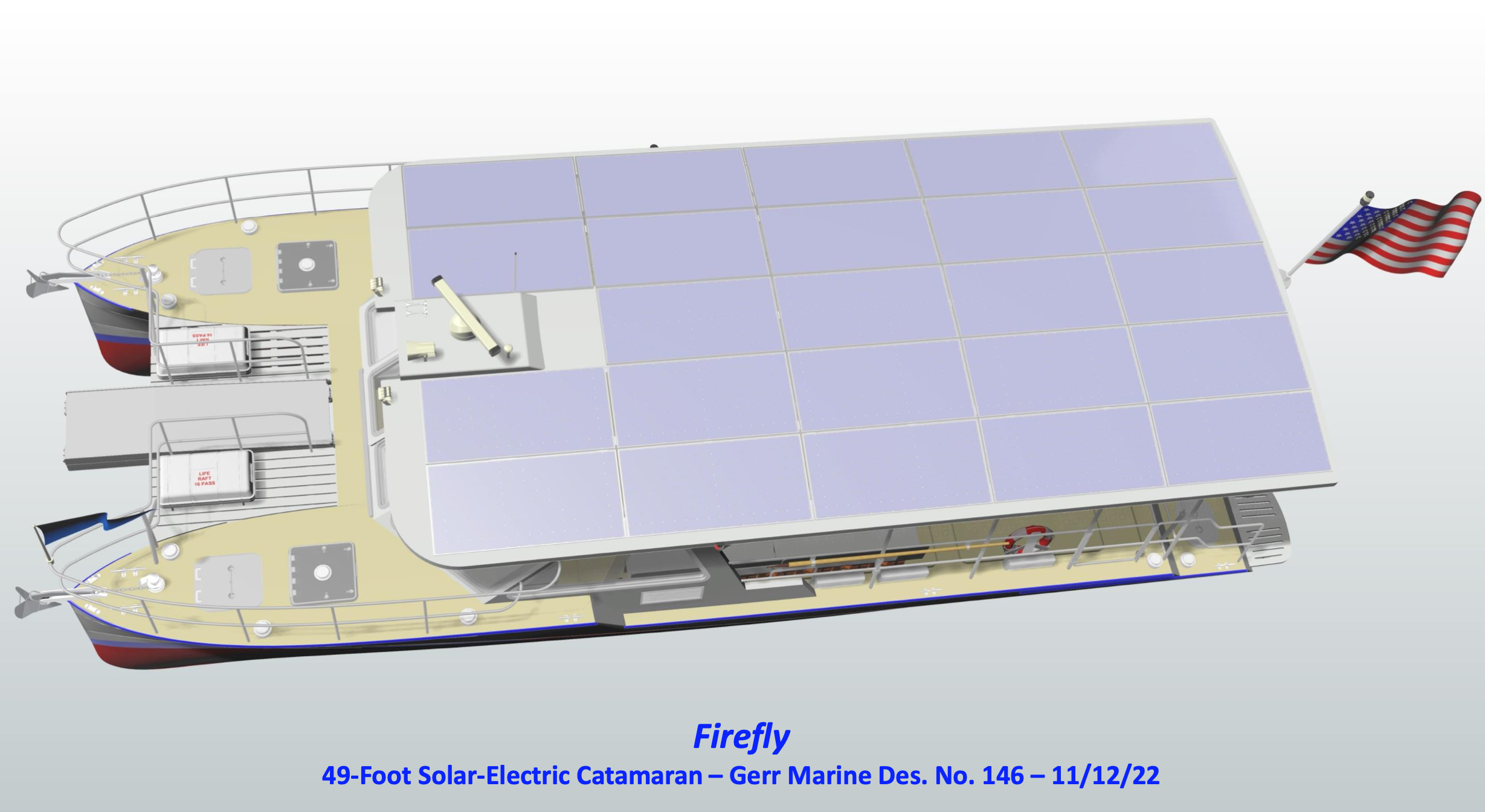Firefly: A Watercraft for the 21st Century and Beyond
This article was first published as guest post for Upstream Alliance in February 2024.
Introduction
Amidst growing environmental challenges, nonprofit organizations such as Upstream Alliance play a key role in cultivating awareness, education, and practical solutions. Through on-the-water programs, Upstream Alliance employs kayaks and motorboats that help foster a deep connection between people and nature.
In a forward-looking move, later this year Upstream Alliance will take it a step further: it plans to introduce a solar-powered catamaran to its fleet, a progressive step that aligns with its deep commitment to environmental sustainability.
Christened with the name Firefly, the much-anticipated addition is poised to elevate the organization's impact in providing powerful and memorable experiences, addressing issues at their source, and working collaboratively with current and future conservation leaders.
What is a Solar-Powered Catamaran?
A catamaran is a watercraft with two parallel hulls of equal size, known for its safety and efficiency: its wide base makes it unlikely to easily capsize, while the double hull provides a smaller hydrodynamic resistance than comparable monohulls (i.e. it has lower “displacement”), requiring comparatively less propulsive power from either sails or motors.
Solar-powered catamarans rely exclusively on energy from the Sun to generate power, offering a promising and environmentally friendly innovation in maritime transportation. They are vessels that harness solar energy through photovoltaic panels installed on their surfaces. Such vessels are designed to minimize reliance on conventional fuel sources, reduce emissions, and promote eco-friendly transportation.
Firefly Overview
Commissioned by Upstream Alliance in 2023, and intended to be used as vessel for educational tours beginning in 2024, Firefly will measure 49’ long and 20’ wide, be run by a crew of 4, and allow up to 36 passengers onboard. It is anticipated to have a draft of only 3 feet, allowing for operation in shallow river waters.
Here are a few of its main features and benefits:
· Photovoltaic Panels on the roof, that will convert sunlight into electrical energy, powering the boat's propulsion systems.
· Aluminum- Built, Dual-Hull Design, providing stability, efficiency, and increased deck space, enhancing Firefly’s suitability for solar installations and functionality as a floating classroom.
· Energy Storage Systems: To ensure continuous operation during low sunlight conditions or at night, Firefly will feature batteries, allowing for energy storage and usage as needed.
· Dramatic Reduction in Carbon Emission and dependence on fossil fuels, contributing to a cleaner and much more sustainable experience on the water.
· Cost Efficiency: While initial investment costs may be higher than a typical, diesel-powered catamaran, the long-term operational costs are considerably lower due to reduced fuel expenses and maintenance associated with traditional propulsion systems.
· Quiet Operation: Firefly is expected to operate very quietly, minimizing noise pollution and ensuring a more pleasant experience for passengers and marine life.
About the Builder
Designed by Gerr Marine, a New York naval architect firm, Firefly is currently being built by Lyman-Morse, a custom power and sailing yacht builder based in Maine and founded in the late 1970s. Towards the end of the twentieth century, the company partnered with Steele and Marshall to build aluminum hulls.
In the decades since, Lyman-Morse has accumulated a combination of significant and unique experiences in aluminum welding, machining, and fabrication. As a result, they have the ability to deliver large, small, and complex aluminum-built pieces for everything from marine research to textile looming and everything in between.
Advancing On-the-Water Education Initiatives with the Solar-Powered Firefly
A key part of Upstream Alliance’s mission is the aspiration to connect people with nature through immersive experiences on the water. By integrating a solar-powered catamaran into its fleet, the organization is poised to enhance these experiences: participants will not only witness and learn from champions of environmental causes, but also engage with cutting-edge technology, reinforcing the connection between sustainable practices and the preservation of natural resources.
By harnessing clean energy, the organization exemplifies a commitment to sustainable solutions. The innovative addition that Firefly represents aligns with the goal of implementing effective initiatives, further solidifying the organization's position as a catalyst for positive environmental impact.
Beyond showcasing the beauty of the environment, this eco-friendly vessel exemplifies a commitment to cutting-edge technology and sustainable practices. Conservation leaders, immersed in these experiences, gain insights not only into environmental challenges but also into the potential of sustainable solutions, reinforcing the organization's role as a leader in promoting clean water, public access and coastal resilience.
Initiatives on Key Waterways
Firefly reinforces the commitment of Upstream Alliance to regional environmental conservation, and showcases a dedication to minimizing the ecological footprint of its programs. The organization's forward-thinking approach ensures a harmonious coexistence between human activities and the delicate ecosystems of vital water bodies, such as the Delaware River, Hudson River, Brandywine River, and the Chesapeake Bay.
In its recent endeavors in Camden, NJ, the organization is positioned to maximize its impact by incorporating Firefly. This urban area, facing unique environmental challenges, can benefit significantly from sustainable solutions. The organization's engagement with the community, coupled with the introduction of eco-friendly technology, reflects a holistic approach to addressing environmental issues and inspiring positive change at a local level.
Conclusion
In conclusion, Upstream Alliance’s visionary decision to introduce Firefly, a solar-powered catamaran, into its fleet signifies a significant leap forward in advancing on-the-water education initiatives.
This innovative addition aligns with the organization's core values of connecting people to nature, solving environmental problems at their source, and providing powerful experiences for conservation leaders.
As Upstream Alliance continues its initiatives on major water bodies and expands its outreach, the solar-powered catamaran Firefly becomes a symbol of genuine sustainability, exemplifying an inspiring commitment to a harmonious and eco-friendly future.






